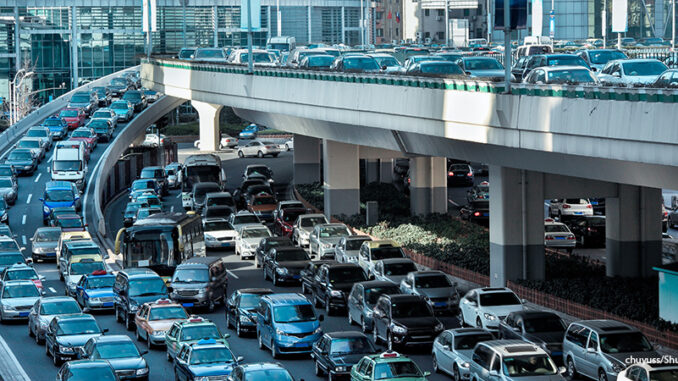
New Developments in Brexit
For the past two years, Europe has tried to figure out the terms of Britain’s plan to leave the European Union (EU), a process known as “Brexit.” This has been complicated because Britain wants to stay connected to the EU in some ways, such as free trade, but separate itself on other issues, such as immigration. In July, British Prime Minister Theresa May came up with a solution she called the “Chequers Plan.” According to this plan, there would be no more free movement of people across Britain’s borders. However, there would still be a free flow of goods between Ireland, which remains in the EU, and Northern Ireland, which is part of the UK and would split off with Britain. In addition, Britain would follow the EU’s trade rules on manufactured goods, but not on services. Britain would also set up its own independent body to resolve trade disputes. May’s cabinet supported the Chequers Plan–largely because May made it clear that if they didn’t support it, they should resign.
Last Thursday, however, the 27 members of the European Council met at an informal summit in Salzburg, Austria, and dismissed the Chequers Plan. European Council president Donald Tusk said that many parts of the plan were in violation of the “four freedoms” of the European Union: the free movement of goods, capital, services, and labor between member countries. According to the Council, Britain must either choose to remain in the single market fully, as it has in the past, or else it must accept a much more limited trade deal, as the EU has with other countries such as Canada.
Despite this stalemate, it’s hoped that the major points of the plan will be ironed out by the EU summit meeting in mid-October.
Dig Deeper Why is Northern Ireland part of the United Kingdom (UK), but Ireland is not?
Big Changes for LEGO?

When you were growing up, did you play with LEGO? The brightly-colored, interlocking plastic bricks are one of the world’s most popular toys and have been for generations. The company made about $1.2 billion in profit last year, and its factory churns out about one hundred million parts every single day. It’s safe to say that LEGO has been virtually the same since your parents played with them, and maybe even your grandparents. In fact, pieces made by the company in 1958 are still compatible with bricks made today.
So why is LEGO talking about making a change? Because the company is concerned about the environmental footprint of its product. Those wildly-popular little bricks are made from ABS, or acrylonitrile butadiene styrene: a petroleum-based plastic. The company’s factory also emits about one million tons of carbon dioxide every year. To address this issue, LEGO is spending over $122 million and hiring 100 new people to find a way to create the bricks without using petroleum-based plastics. Their goal is to build their bricks entirely from plant-based or recycled products by 2030.
The problem is that the new pieces still have to be strong, durable, brightly-colored, and easily interlocking. So far, no satisfactory environmentally-friendly alternative has been found. LEGO has acknowledged that the search could take years, but that it will continue to look for a way to create a more responsible product for the future. At the same time, the company has also pledged to keep all of its packaging out of landfills by 2025.
Dig Deeper LEGO wants to stop using ABS, or acrylonitrile butadiene styrene, in its toys. What other products do you use every day that are made from ABS? Use internet resources to help you come up with a list of common items.
Senate Race Tightens in Texas
By now, you may have heard of Beto O’Rourke, the Texas Democrat who is challenging Republican Ted Cruz’s Senate seat this November. Traditional numbers would suggest that Cruz, who has served as Texas senator for five years, should keep his seat easily. No Democrat has won a Senate race in Texas in nearly a quarter of a century. Ted Cruz is a household name, having run against Donald Trump in the 2016 Republican presidential primary. He’s also Latino, which helps win over Latino voters–a big deal in a state like Texas, which has such a large Latino population.
But O’Rourke, a congressman from El Paso, is gaining ground. He is an inspiring public speaker who has energized Democrats across the state and the nation. So far, he has managed to raise over $23 million dollars for his campaign. He also speaks fluent Spanish and has recently recorded a series of Spanish-language political ads. (By contrast, Cruz has a Cuban father but can’t actually speak Spanish.) And the fallout from Trump’s extremely controversial “zero tolerance” immigration policy that led to the separation of thousands of families along the southwest border should potentially rally Latino voters to the Democrats’ side.
Still, O’Rourke will likely still have trouble getting enough votes to win. A large Latino population doesn’t necessarily mean that those Latinos are registered to vote. Texas has very restrictive laws for registering new voters. In fact, Texas ranks last among U.S. states in voter participation. Also, Texas is still a heavily conservative state that trends reliably Republican. A televised debate between the two candidates last Friday ended in a draw, and the race is currently considered a “toss-up.”
Dig Deeper Working with a friend, create a poster or other graphic organizer that compares and contrasts the differences between Cruz and O’Rourke.
The Commuter Crisis
It’s no surprise that Americans hate sitting in traffic. And yet, we are spending more time doing it than ever before.
In 2017, the average commute lasted about 26.9 minutes: an increase of 18 seconds from 2016. Eighteen seconds might not sound like much, but over the course of a year, it equals an extra two and a half hours of sitting in traffic. Overall, American workers spend almost 35 hours more per week commuting than workers did in the 1990s. That’s almost an entire work week!
Obviously, one harmful result of this is lost productivity – time people could better spend doing other things. But a lengthy commute can also take a dangerous health toll on individuals. Long commutes have been linked to obesity, stress, anxiety, depression, high blood pressure, neck and back pain, higher rates of divorce, and even a shorter lifespan.
Why the increased travel times? It’s simple: more people on the road. A growing population, plus a booming job market, means that more people are driving than ever before. This is further complicated by app-based companies such as Uber and Lyft, which make frequent stops to drop off and pick up passengers. Also, more and more people using companies such as Amazon mean that there are more delivery trucks on the road.
So what can cities do about this commuter crisis? Investing in better public transportation services is one idea, as well as alternative transportation methods such as rented bikes and scooters. Another idea is congestion pricing: requiring people to pay to use the roads, which would bring down the number of cars in use.
